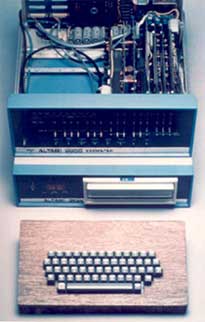First-Hand:Early PC History
Datapoint Role in Early PC and Networking Work
[I have met Austin Roche and also some of the other early researchers/developers who worked at Datapoint. I think that someone needs to dig more into the information contained in this document, taken from the San Antonio Express News on Tuesday, June 2nd, 2009. I have also visited the Austin Museum mentioned and have even proposed starting a technology museum in San Antonio, TX. T. Scott Atkinson, LSM, IEEE].
Originally written by Alan Weinkrantz
For the last 20 years, I've had a continuing discussion with local freelance writer Lamont Wood, who's been on a mission to set the record straight about the origin of what is commonly known today as the personal computer.
Technology lore would have you believe that it all started in a garage somewhere in what became Silicon Valley. But the fact of the matter is that it happened here in San Antonio. Yes, Mr. Gates and Mr. Jobs, the origins of not only the PC, but the microprocessor, local area networking, integrated software and videoconferencing all can be traced to the pioneering work of what was once known as Datapoint Corp. Today, the Datapoint name remains, but as a systems integrator for enterprise and call centers.
Wood has major street credibility, having written seven books under his own name and several others as a ghostwriter. He also has sold more than 550 feature articles to magazines here and abroad, and is a blogger in his own right.
He worked at Datapoint in product publicity from 1980-82. He knows about the company's accomplishments and has grown annoyed at seeing them overlooked.
(For the record, I also worked as a media relations consultant to Datapoint, under the leadership of then-CEO Robert J. Potter, in the roll-out of their first PC-based network and the launch of its first Windows-based PC in the late 1980s. I was also part of the PR team that Chairman Asher Edelman installed as the company wound down.)
Last summer, Wood wrote an overview article documenting this story for Computerworld magazine (a link to the article is on my blog today), which appeared only after providing painstaking proof that his facts and the basis for his story were real. Even Wikipedia has some information about the sequence of events (again, see my blog today) with links to Wood's research.
Most of the printed histories, Wood has discovered, were more interested in making heroes out of Bill Gates and Steve Jobs than in getting the facts correct. But the truth is that the founders of Datapoint were inventing the personal computer while Mr. Gates and Mr. Jobs were in middle school.
Of late, Wood has been interviewing principals who were involved with Datapoint in the late 1960s and early 1970s and is writing the manuscript for a book that he has in development. (A synopsis of his manuscript appears on my blog today.)
Wood also recently was involved in setting up a display about the history of Datapoint for the Goodwill Computer Museum in Austin. He worked with Austin Roche, one of the sons of Datapoint co-founder Gus Roche.
For more than 20 years, Wood has been on a lengthy journey to set the record straight about the origins of the personal computer and other technology innovations that now are considered mainstream tools in our daily lives. This story needs to be told sooner rather than later, as many of the living participants in this crucial bit of technology history are slipping away.
About the Author
Alan Weinkrantz is a public relations and social consultant. He blogs about his business at weinkrantz.com, the startup community in San Antonio at sanantoniostartups.com, and AT&T's three-screen consumer strategy at 3Screens.net. His column appears monthly. Follow him on Twitter: twitter.com/alanweinkrantz
